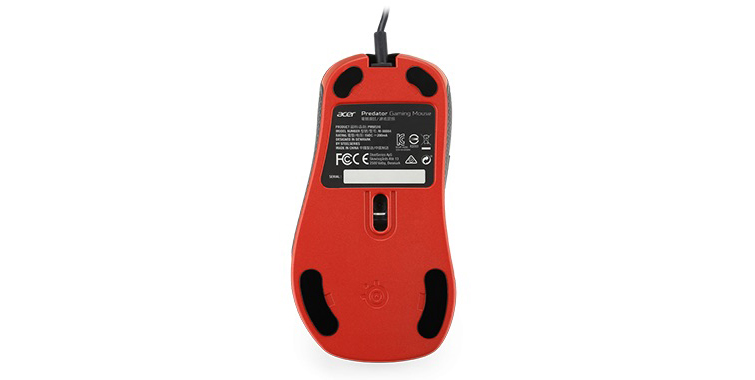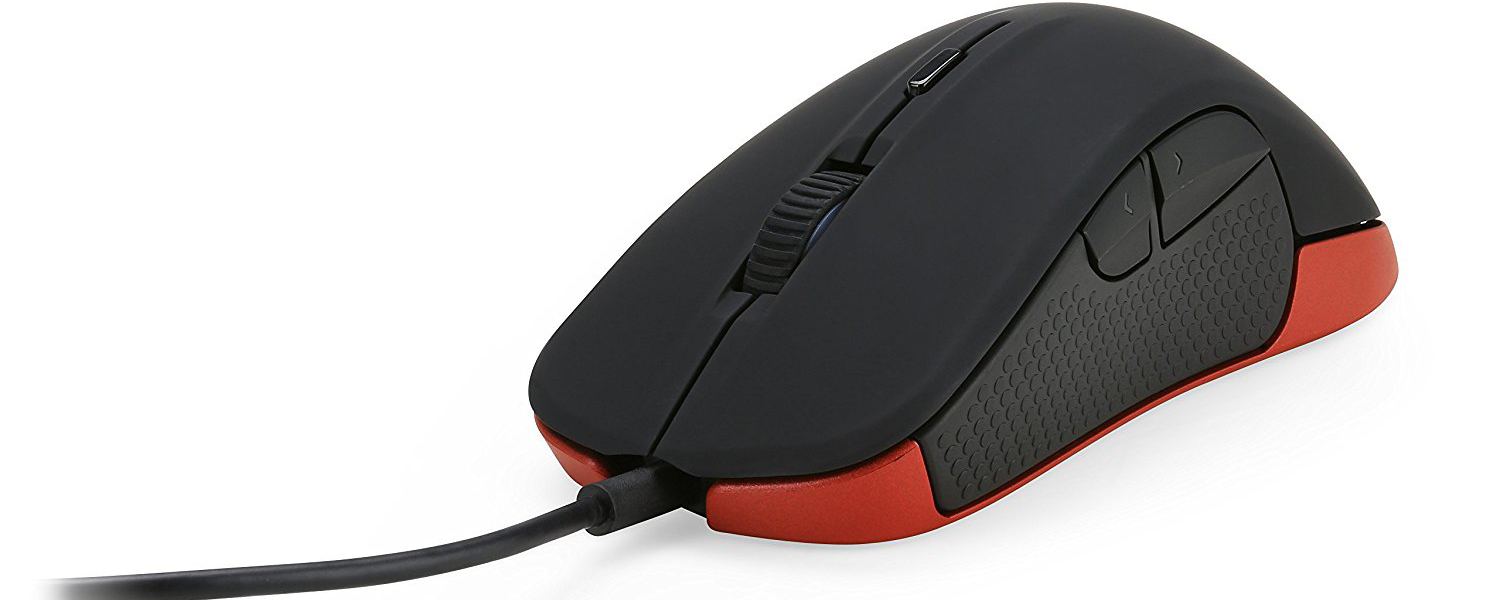Tom's Guide Verdict
If you got the Acer Predator mouse as a pack-in with a new Acer machine, keep it; otherwise, pick up a different SteelSeries mouse instead.
Pros
- +
Competent SteelSeries mouse
- +
Robust software
- +
Comfortable grip
Cons
- -
Overpriced
- -
Limiting aesthetic design
- -
No distinguishing features
Why you can trust Tom's Guide
Acer makes some pretty decent gaming laptops, but I didn't understand why it needed a branded mouse to go along with them. After all, if Lenovo's efforts are any indication, computer manufacturers don't always make the best peripherals. When I picked up the Acer Predator mouse ($80), I noticed something unusual, though: a SteelSeries logo.
Rather than try its hand at making mice from scratch, Acer subcontracted its mouse to an established player in the space. SteelSeries produces some of the best peripherals on the market; surely, it could take the Acer aesthetic and make it into something truly special.
As generalist gaming mice go, the Predator is huge.
The good news is that the Acer Predator mouse is a perfectly decent tool, delivering solid in-game performance and easy customization options. The bad news is that it costs as much as considerably better mice, and its distinctive Acer style makes it considerably less attractive to anyone with a different type of PC. The Acer Predator is a decent SteelSeries mouse, but unless it comes with your computer, there's no particular reason to get it instead of the Rival or the Sensei.
Design
As generalist gaming mice go, the Predator is huge, measuring 5.1 x 2.7 x 1.7 inches. If you play with a palm grip (or just have huge hands), the Predator will suit you fine; otherwise, it may feel a bit unwieldy. (It's almost identical to the SteelSeries Rival 300 mouse, except the Rival 300 costs $20 less.)

There are six programmable buttons: a left button, a right button, a clickable scroll wheel, a dots-per-inch (DPI) sensitivity adjuster below the wheel and two thumb buttons. It's not a bad layout, especially because it allows for a right-handed ergonomic conformation. The buttons are large and responsive, and there are textured grips on both sides of the mouse.

My only major concerns with the mouse are aesthetic. But considering a good mouse can be the focal point of your gaming setup for years to come, aesthetics are worth taking into consideration. The mouse has a prominent, illuminated Predator logo (and the word "Predator") on the palm rest. The bottom and underside of the mouse are cast in red plastic, in line with the Predator computer look and feel.
The Predator was accurate, precise and responsive across the board.
Needless to say, it's not as sleek as the simple black of the Rival, nor as versatile. Even if you have a Predator desktop or laptop right now, you may not have one forever. The PC gaming industry's fascination with the red-and-black color scheme may (and hopefully will) evaporate in the near future. Hitching your gaming mouse to a specific brand identity isn't a deal breaker, but why do it if you don't have to?
Features
The Predator mouse runs on the SteelSeries Engine 3 software, which means it's exceedingly simple to program. Using the software, you can easily configure the buttons, the RGB lighting, the profiles, the DPI, and whatever else you need to customize in a gaming mouse.

The DPI ranges from 100 to 6,500; hardly earth-shattering, but more than you're likely to need unless you have a truly prodigious multimonitor setup. It's also worth noting that the Predator doesn't have any onboard profiles, but this shouldn't be a problem unless you're big in the tournament scene. And the Predator, whatever its benefits and drawbacks may be, is not a tournament mouse.
You're paying extra for a logo and a red piece of plastic.
Beyond that, the Predator doesn't have any noteworthy features. It works like any other SteelSeries mouse, which is generally a good thing. Brand enthusiasts who are hoping for some kind of special connectivity with Acer computers are out of luck, though.
Performance
The Acer Predator mouse performed as well as any other mouse in its price range. I ran it through Overwatch, Heroes of the Storm, The Witcher 3: Wild Hunt, and Hex: Shards of Fate to gauge how well it ran in a variety of genres. The peripheral was accurate, precise and responsive across the board.

Having two extra buttons was helpful for mapping additional skills in Heroes of the Storm, and the mouse's straightforward design was handy for letting me focus on keyboard commands in complicated games such as The Witcher 3. There's not much else to say about it; it works.
Bottom Line
While there's nothing really wrong with the Predator mouse, I can't think of a good reason to recommend it, either. The Rival 300, which it mimics, is cheaper and prettier. If you've got $80 to spend on a gaming mouse, you're better off with theLogitech G502 Proteus Spectrum or theRazer DeathAdder Elite.

Even if you're a hard-core fan of the Acer Predator brand and you know, beyond a shadow of a doubt, that you'll be so until the day you die, the Predator mouse doesn't work better on Acer machines than it does on any other kind of machine. You're paying extra for a logo and a red piece of plastic.
On one hand, if you get the Predator as a pack-in mouse with a new machine, you'll be happy to know that it's not just a throwaway peripheral. On the other hand, if you can get something else, then get a better mouse.
Credit: Acer
Marshall Honorof is a senior editor for Tom's Guide, overseeing the site's coverage of gaming hardware and software. He comes from a science writing background, having studied paleomammalogy, biological anthropology, and the history of science and technology. After hours, you can find him practicing taekwondo or doing deep dives on classic sci-fi.


